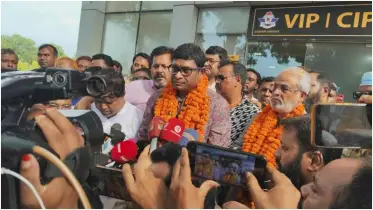This passage is adapted from Francis J. Flynn and GabrielleS. Adams, “Money Can’t Buy Love: Asymmetric Beliefs aboutGift Price and Feelings of Appreciation.”Every day, millions of shoppers hit the stores infull force’s closest peers. At the same time,many dread the thought of buying gifts; they worry15 that their purchases will disappoint rather thandelight the intended recipients.Anthropologists describe gift-giving as a positivesocial process, serving various political, religious, andpsychological functions. Economists, however, offer20 a less favorable view. According to Waldfogel (1993),gift-giving represents an objective waste of resources.People buy gifts that recipients would not choose tobuy on their own, or at least not spend as muchmoney to purchase (a phenomenon referred to as25’’the deadweight loss of Christmas”). To wit, giversare likely to spend $100 to purchase a gift thatreceivers would spend only $80 to buy themselves.This ‘’deadweight loss” suggests that gift-givers arenot very good at predicting what gifts others will30 appreciate. That in itself is not surprising to socialpsychologists. Research has found that people oftenstruggle to take account of others’ perspectives’s feelings of appreciation). Although a50 link between gift price and feelings of appreciationmight seem intuitive to gift-givers, such anassumption may be unfounded. Indeed, we proposethat gift-recipients will be less inclined to base theirfeelings of appreciation on the magnitude of a gift55 than givers assume.Why do gift-givers assume that gift price is closelylinked to gift-recipients’ feelings of appreciation?Perhaps givers believe that bigger (i.e., moreexpensive) gifts convey stronger signals of60 thoughtfulness and consideration. According toCamerer (1988) and others, gift-giving represents asymbolic ritual, whereby gift-givers attempt to signaltheir positive attitudes toward the intended recipientand their willingness to invest resources in a future65 relationship. In this sense, gift-givers may bemotivated to spend more money on a gift in order tosend a “stronger signal” to their intended recipient.As for gift-recipients, they may not construe smallerand larger gifts as representing smaller and larger70 signals of thoughtfulness and consideration.The notion of gift-givers and gift-recipients beingunable to account for the other party’s perspectiveseems puzzling because people slip in and out ofthese roles every day, and, in some cases, multiple75 times in the course of the same day. Yet, despite theextensive experience that people have as both giversand receivers, they often struggle to transferinformation gained from one role (e.g., as a giver)and apply it in another, complementary role (e.g., as80 a receiver). In theoretical terms, people fail to utilizeinformation about their own preferences andexperiences in order to produce more efficientoutcomes in their exchange relations. In practicalterms, people spend hundreds of dollars each year on90 gifts, but somehow never learn to calibrate their giftexpenditures according to personal insight.Questions.1) The authors most likely use the examples in lines 1-9of the passage (“Every... showers”) to highlight the
A) regularity with which people shop for gifts.
B) recent increase in the amount of money spent ongifts.
C) anxiety gift shopping causes for consumers.
D) number of special occasions involvinggift-giving.
2) In line 10, the word “ambivalent” most nearly means
A) unrealistic.
B) conflicted.
C) apprehensive.
D) supportive.
3) The authors indicate that people value gift-givingbecause they feel it
A) functions as a form of self-expression.
B) is an inexpensive way to show appreciation.
C) requires the gift-recipient to reciprocate.
D) can serve to strengthen a relationship.
4) Which choice provides the best evidence for theanswer to the previous question?
A) Lines 10-13 (“Many... peers”)
B) Lines 22-23 (“People... own”)
C) Lines 31-32 (“Research... perspectives”)
D) Lines 44-47 (“Although... unfounded”)
5) The “social psychologists” mentioned in paragraph 2(lines 17-34) would likely describe the “deadweightloss” phenomenon as
A) predictable.
B) questionable.
C) disturbing.
D) unprecedented.
6) The passage indicates that the assumption made bygift-givers in lines 41-44 may be
A) insincere.
B) unreasonable.
C) incorrect.
D) substantiated.
7) As it is used in line 59, “convey” most nearly means
A) transport.
B) counteract.
C) exchange.
D) communicate.
8) The authors refer to work by Camerer and others(line 60) in order to
A) offer an explanation.
B) introduce an argument.
C) question a motive.
D) support a conclusion Answers.
to be continued...
[email protected]
ঢাকা, বাংলাদেশ রোববার ১৩ জুলাই ২০২৫, ২৯ আষাঢ় ১৪৩২








